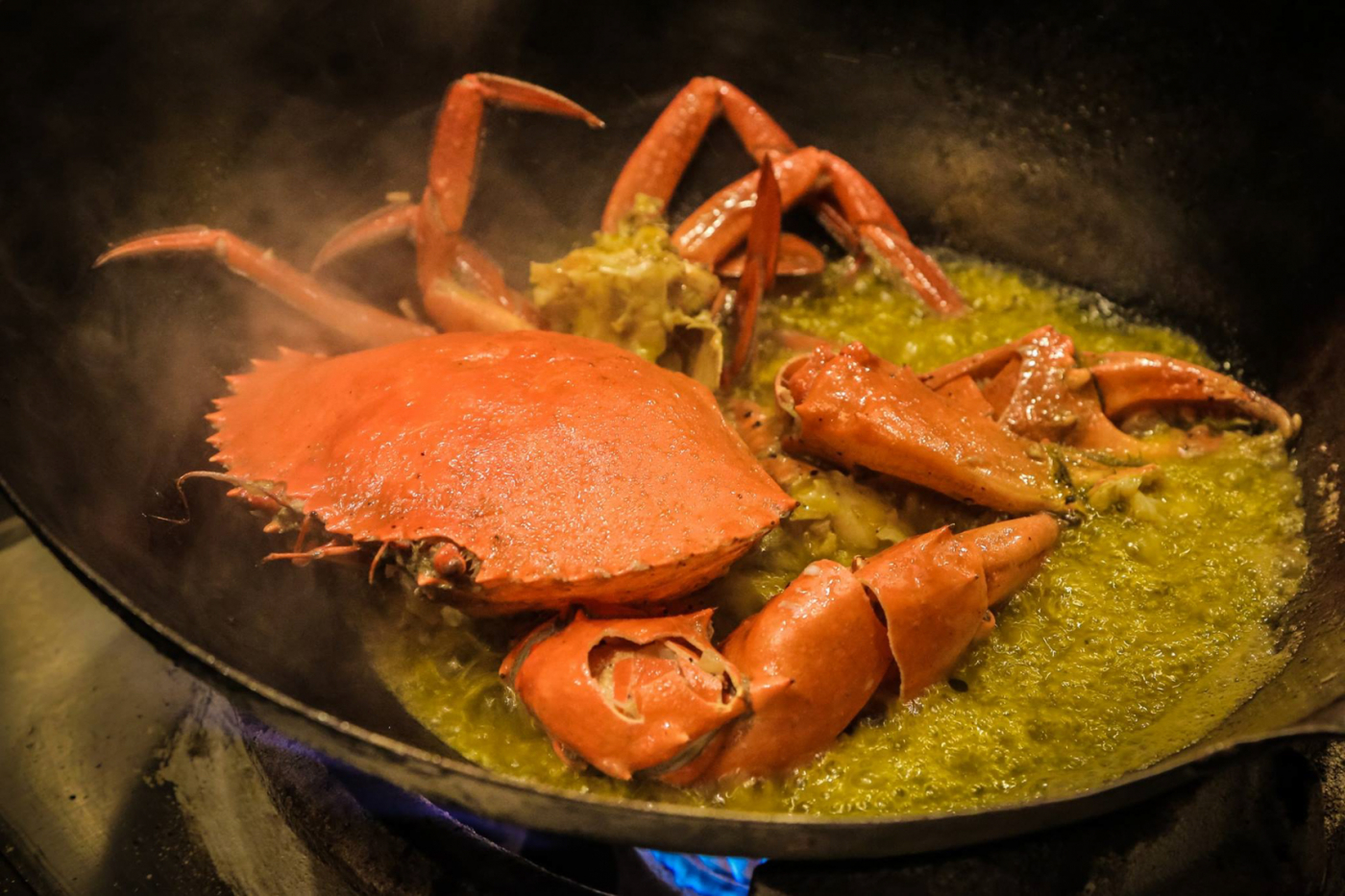
Review: Ministry of Crab, Colombo, Sri Lanka
Is one of Sri Lanka’s most expensive restaurants also one of its best? Or is it all celebrity endorsed hype? David J Constable visits the Ministry of Crab

Is one of Sri Lanka’s most expensive restaurants also one of its best? Or is it all celebrity endorsed hype? David J Constable visits the Ministry of Crab

Let me tell you about crustaceans… crabbing for enjoyment and nourishment. That shell-cracking pleasure of dismantling a kilo weight of pepper crab; of demolishing a hefty curried crab; or destroying a colossal chilli crab, then slurping clean the buttered remnants of a half-emptied sweet-meat Crabzilla. All that rewarding fiddly gratification of fingering out the meat from the legs and claws, and positioning – just right – the slip ‘n’ slide angling of a walnut cracker, then splintering the shell to reveal your fleshy reward.
Little of the crab is crushed, snapped-off or removed. That’s up to you
I used to go crabbing as a child, on the annual Cornish jaunt from Kent to Polperro. My granddad would wake me up before sunrise and we’d plod down to the bakery to collect fresh bread, then sit on the stone harbour with our feet dangling over the edge and our weighted-lines in the water, tearing off hunks of warm dough for breakfast. These were shore and broad clawed crabs, marine critters prisoned by the three-wall structure of a harbour enclosure, confused about their exit. It was hook, line and sinker before they’d realised their escape. They were small but free. Little meat was ever salvaged from the shells, their eventual use more suitable as pub ashtray than restaurant presentation bowl.

As alarming as delicious when it’s this close up, no?
In Sri Lanka there are more varying degrees of crab size. Most are common spider crabs and large pie-crust-shell edible crabs. At Ministry of Crab in the former 17th century Colombo Dutch Hospital, they’re as diverse as a half-kilo, to 2kg and more; and as expensive as the capital real estate it embodies suggests. This is possibly Sri Lanka’s most expensive restaurant.
All around me are the diplomats and dignitaries of local office; successful advertisers and marketers, and behind me, the former-captain of the Sri Lankan cricket team – the batsman who recently demolished England with his century in the one-day internationals – and part MOC owner, Kumar Sangakkara.
Under local chef Dharshan Munidase and cricketers Mahela Jayawardene and Sangakkara, Ministry of Crab has become one of the most sought after reservations in the capital. It surveyed the local dining scene, digested its menu inventory, formed the necessary fishery relationships, and did the gastronomic maths. All that research and data means locally sourced ingredients from the island are prosaically addressed and served whole. Little of the crab is crushed, snapped-off or removed. That’s up to you.
The restaurant website promises: “When it comes to crab we don’t serve them small, meatless, with one claw missing, or with unevenly sized claws – only real export quality giants”. And they deliver. After all, this is no Cornish beachside crab-shack, but a premier dining experience for the upper-etchings of Colombo society.
Using the native black pepper (the corns are rolled on a traditional miris gala) my crab was cooked in a blackened pepper broth with pepper corns. Lashings of butter has been added to temper the sting, but this is the Indian subcontinent, where they like their hearty fare hotter than the Gates of Hell. It’s a fantastic mix of sweet butter and thickly applied pepper soaking through the meat, a great infusion of textures and salty oomph.
Half Sri Lankan and half Japanese, Munidase allows the influence of Asia to show on the menu. East Asian style dishes feature ginger, soy sauce and Wasabi Nori, but it’s still the king crab that has star billing.
All that creamy sweetness and the blending of distinct regional flavours; the spicy bundles of joy (and pain) found in Nai Miris and peperoncini, has conceived a new national dish to finally rival string hoppers and kottu.
I realised that for all my crustacean-chomping life, I’d been eating a pale, sad English shadow of the real thing. It had the palpable familiarity, but the liberal lathering of endemic spice and piquant flavouring lifted the Sri Lankan offering to something greater.
Maybe it’s all just a trigger of nostalgia, but even so, isn’t that what food is all about? Food is the surest and most honest way to understand people and a country, rooted in memory. Any dish that can send you back to the joy of childhood is worth the investment, even if it is a ridiculously expensive trip down memory lane. C
Ministry of Crab, Old Dutch Hospital, Colombo, Sri Lanka
+94 11 2 342722; ministryofcrab.com